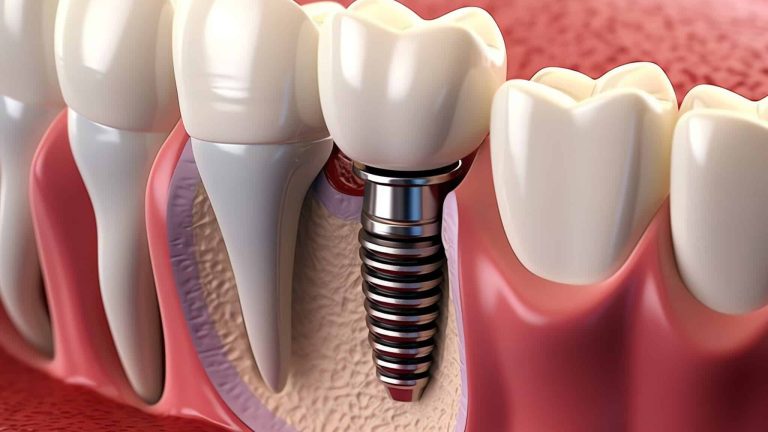The smile is one of the first things we notice in people. A radiant smile not only enhances appearance but can also boost self-esteem and confidence. However, many people feel uncomfortable with the appearance of their teeth due to stains, fractures, slight misalignments, or gaps between them. Fortunately, dental veneers offer a quick, effective, and long-lasting solution to transform a smile, restoring both aesthetic harmony and dental functionality.
In this article, we will delve into what dental veneers are, the different materials used, the application process, and how this treatment not only improves the aesthetics of the smile but also dental function. Additionally, we will include a real case showing the positive impact of dental veneers on patients’ lives.
What are dental veneers?
Dental veneers are thin layers made from special materials like porcelain or composite that are bonded to the front surface of the teeth to improve their appearance. This aesthetic treatment is used to correct a wide range of issues, such as discolored, worn, chipped, misaligned, or gapped teeth.
Veneers are custom-made for each patient, meaning they perfectly match the color, size, and shape of natural teeth, achieving a harmonious and completely natural aesthetic appearance.
When are dental veneers recommended?
Dental veneers are recommended in various situations where the patient seeks to improve both the appearance and functionality of their teeth. Some of the most common cases include:
- Stained or discolored teeth: When whitening treatments are ineffective or there are deep stains caused by medication, tobacco use, or fluoride.
- Chipped or worn teeth: Veneers can restore the appearance of teeth that have suffered some damage due to accidents or wear over time.
- Misaligned or slightly irregular teeth: Instead of undergoing prolonged orthodontic treatment, veneers can offer a quick solution to improve the aesthetic alignment of the teeth.
- Gaps between teeth: To close diastemas (gaps between teeth), veneers provide a quick and effective correction.
Materials available for dental veneers
There are two main materials for making dental veneers: porcelain and composite. Each has its own characteristics and advantages, so the choice of material will depend on the patient’s needs and expectations.
1. Porcelain veneers
Porcelain veneers are probably the most popular option among patients looking for a long-lasting aesthetic solution. Porcelain is a highly durable and aesthetically pleasing material that closely mimics the appearance of natural tooth enamel.
Advantages of porcelain veneers:
- Superior aesthetics: Porcelain has a shine and transparency that perfectly mimic the appearance of natural teeth, making porcelain veneers virtually indistinguishable from real teeth.
- Durability: These veneers are extremely stain-resistant and can last between 10 to 15 years, or even longer with proper care.
- Stain resistance: Due to the smooth surface of porcelain, veneers are less likely to stain from foods or drinks like coffee or red wine.
Disadvantages:
- Cost: Porcelain veneers tend to be more expensive than composite veneers.
- Longer treatment time: The process of making and placing porcelain veneers requires more dental visits compared to composite veneers.
2. Composite veneers
Composite veneers are made from a composite resin material that is applied directly to the tooth. Although they are not as durable or long-lasting as porcelain veneers, composite veneers remain an excellent option, especially for patients looking for a more affordable aesthetic solution.
Advantages of composite veneers:
- More affordable: They are less expensive than porcelain veneers, making them a popular choice for those on a budget.
- Less invasive: In many cases, less tooth structure needs to be removed to place composite veneers.
- Shorter treatment time: Composite veneers can be applied in a single dental visit, meaning a faster treatment time.
Disadvantages:
- Less durability: Although composite veneers can last between 5 and 7 years, they are less durable than porcelain and may be more prone to chipping or staining over time.
- Appearance: Although composite can offer very good aesthetic results, porcelain remains superior in terms of mimicking the brightness and transparency of natural teeth.
Process of applying dental veneers
The process of applying dental veneers may vary slightly depending on the chosen material, but generally follows a standard set of steps. Here’s how the procedure is carried out:
1. Initial consultation and planning
The first step is an evaluation with the dentist to determine if dental veneers are the best option for your needs. During this consultation, the general health of your teeth and gums will be assessed. Your aesthetic goals will also be discussed, including the desired color, size, and shape of the teeth.
2. Tooth preparation
To apply the veneers, the dentist must prepare the tooth surface. This involves removing a thin layer of dental enamel (usually between 0.3 and 0.5 millimeters), enough to ensure that the veneer adheres properly and aligns with the natural teeth. In some cases, local anesthesia is applied to ensure patient comfort during this process.
3. Impressions
Once the tooth is prepared, digital impressions or physical molds of the teeth are taken, which are sent to a dental laboratory where the custom veneers will be made. While the final veneers are being fabricated, temporary veneers may be placed to protect the teeth.
4. Trial and adjustment
When the veneers are ready, the patient returns to the dental office for placement. Before permanently cementing them, the dentist will try the veneers to ensure that the color, shape, and fit are perfect. Minor adjustments can be made if necessary.
5. Cementation
Once everything is in place, the veneers are permanently cemented to the tooth using a special adhesive and cured with ultraviolet light. This process ensures that the veneers adhere firmly to the teeth, providing a new and lasting smile.
Benefits of dental veneers: Beyond aesthetics
Although dental veneers are primarily an aesthetic treatment, their benefits go beyond improving the appearance of the smile.
1. Improvement of dental function
Veneers can help improve dental function in cases where teeth are worn or chipped. By covering the tooth surface, they protect the natural enamel and help restore the strength and stability of the tooth.
2. Correction of slight misalignments
For those seeking a quick correction of minor misalignments without the need for orthodontics, veneers can be an excellent option. Although they are not a substitute for orthodontic treatment in more severe cases, they can significantly improve the alignment and appearance of teeth in just a few weeks.
3. Stain resistance and durability
Especially porcelain veneers are very resistant to stains, making them an ideal option for patients concerned about tooth color. In addition, if properly cared for, they can last a decade or more, making them a long-term investment.
Success story: A smile transformation with dental veneers
Maria, a 32-year-old patient, came to Clínicas La Guardia with the desire to improve the appearance of her smile. Her main concerns were the deep stains on her front teeth and a visible gap between her incisors. After a complete evaluation, we decided that porcelain veneers would be the best option to achieve the aesthetic result Maria wanted.
Before:
Maria had stained teeth and a noticeable gap between her upper incisors, which affected her confidence when smiling.
After:
After placing porcelain veneers on the front teeth, the transformation was spectacular. Maria’s teeth now have a uniform, bright color, and the gap between the incisors disappeared completely. Maria not only regained her confidence but also improved her chewing function.
Conclusion: Dental veneers, an aesthetic and functional solution
Dental veneers offer a quick, effective, and long-lasting solution for those looking to improve the appearance of their smile. Whether to correct stains, fractures, or slight misalignments, veneers can transform a patient’s smile in just a few dental visits. At Clínicas La Guardia, we specialize in offering personalized treatments tailored to each patient’s needs and expectations, ensuring results that not only improve aesthetics but also dental functionality.
If you are interested in exploring how dental veneers can help you achieve the smile of your dreams, do not hesitate to contact us for a personalized consultation.



